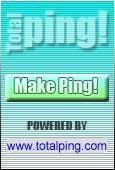Read. Write. Think.org
This website is such a great resource to use as teachers. The specific focus of the site is for Reading/Language Arts, but the great thing about it is that most all of the lessons and resources provided are interdisciplinary. They may involve Social Studies, history, science, even math, which is a necessity when planning. The website offers four main sections: Lessons, Standards, Web Resources, and Student Materials. These are described in more detail below.
1. Lessons:
This section offers hundreds of lessons for grades K-12. It is organized in ABC order, but you can search more narrowly by grade level, subject, or keywords. Once the lesson plan is downloaded, everything you need for that lesson will be included in the plan. For example, if a specific activity sheet is required for the lesson, a link to the printout of that page will be provided in the plan. This is such a great advantage to this ,because the handouts are there for you, and you don’t have to make them. Standards are included also, though they are the national standards, and not the GPS. These lesson plans are very detailed and filled with information, and they are available for basically any subject.
2. Standards:
The standards that are met within each lesson are listed below. At least one, but most of the time several in one lesson are met.
· Students read a wide range of print and nonprint texts to build an understanding of texts, of themselves, and of the cultures of the United States and the world; to acquire new information; to respond to the needs and demands of society and the workplace; and for personal fulfillment. Among these texts are fiction and nonfiction, classic and contemporary works.
· Students read a wide range of literature from many periods in many genres to build an understanding of the many dimensions (e.g., philosophical, ethical, aesthetic) of human experience.
· Students apply a wide range of strategies to comprehend, interpret, evaluate, and appreciate texts. They draw on their prior experience, their interactions with other readers and writers, their knowledge of word meaning and of other texts, their word identification strategies, and their understanding of textual features (e.g., sound-letter correspondence, sentence structure, context, graphics).
· Students adjust their use of spoken, written, and visual language (e.g., conventions, style, vocabulary) to communicate effectively with a variety of audiences and for different purposes.
· Students employ a wide range of strategies as they write and use different writing process elements appropriately to communicate with different audiences for a variety of purposes.
· Students apply knowledge of language structure, language conventions (e.g., spelling and punctuation), media techniques, figurative language, and genre to create, critique, and discuss print and nonprint texts.
· Students conduct research on issues and interests by generating ideas and questions, and by posing problems. They gather, evaluate, and synthesize data from a variety of sources (e.g., print and nonprint texts, artifacts, people) to communicate their discoveries in ways that suit their purpose and audience.
· Students use a variety of technological and information resources (e.g., libraries, databases, computer networks, video) to gather and synthesize information and to create and communicate knowledge.
· Students develop an understanding of and respect for diversity in language use, patterns, and dialects across cultures, ethnic groups, geographic regions, and social roles.
· Students whose first language is not English make use of their first language to develop competency in the English language arts and to develop understanding of content across the curriculum.
· Students participate as knowledgeable, reflective, creative, and critical members of a variety of literacy communities.
· Students use spoken, written, and visual language to accomplish their own purposes (e.g., for learning, enjoyment, persuasion, and the exchange of information).
3. Web Resources:
This is a section that is devoted entirely to other web sources that may be useful to teachers. Some of the sites included are:
These are only a few of many that are given, and the best part is, most of these do not even require a subscription to use the materials!
4. Student Materials:
This section is my favorite on the site. It offers hundreds of materials for both teacher and student use. And, much of the materials are virtual, which is really great. They offer an online comic maker, and an online poem creator, and much more. They graphic organizers, book covers that you can personalize, and games you can play with your class or teams, on a SmartBoard.
This website is intended for teachers, as stated above. But, there are many activities that involve student interaction that allow depth to any lesson. The site provides a great way to integrate and utilize media and technology into your classroom, as well as cross curriculum activites.



0 komentar:
Posting Komentar